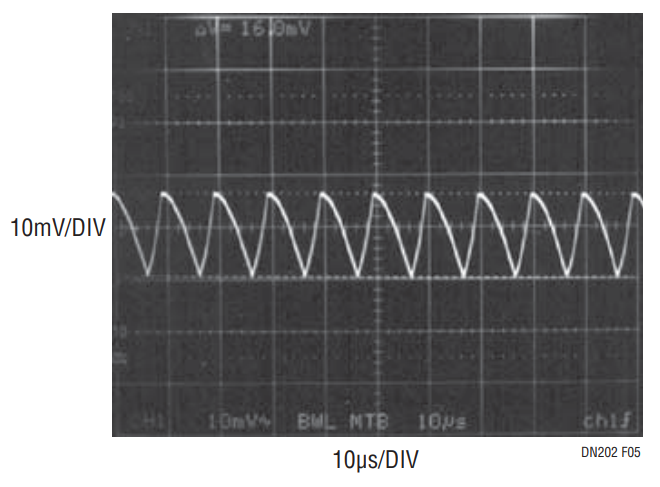Design Note 202: 60V, High Efficiency Buck Switching Regulators in SO-8
The LT1676/LT1776 are wide input range, high efficiency buck (step-down) switching regulators in SO-8 packages. Typical applications include automotive DC/DC conversion, telecom 48V step-down and IEEE1394 (FireWire) step-down converters.
Both the LT1676 and the LT1776 can accept input voltages from 7V to 60V. The LT1676 has a nominal switching frequency of 100kHz whereas the LT1776 runs at 200kHz. For higher input voltage applications, the LT1676 is a better choice because it minimizes AC losses by switching at a lower frequency. For lower input voltage and cases where the input supply has high transient spikes, the LT1776’s higher switching frequency allows a smaller inductor to be used. The LT1676 and the LT1776 each include an onboard 700mA peak current switch, oscillator, control and protection circuitry. These controllers use current mode control and exhibit high efficiency, low ripple and fast transient response. The circuit schematic in Figure 1 highlights the capabilities of the LT1676.
The LT1676 and the LT1776 can both be disabled by connecting the shutdown (SHDN) pin to ground, reducing input current to a few microamperes. For normal operation, decouple the SHDN pin with a 100pF capacitor to ground. The part also has a SYNC pin, used to synchronize the internal oscillator to an external clock, which can range from 130kHz to 250kHz for the LT1676 and 250kHz to 400kHz for the LT1776. To use the part’s internal oscillator, simply connect the SYNC pin to ground.
Figure 1. LT1676 Application Circuit Generating 5V at 500mA from a FireWire Input (8V to 40V).
Since both parts allow such a wide input voltage range, they use two techniques to optimize efficiency. First, the internal control circuitry draws power from the VCC pin, which is normally connected to the output supply. During start-up, the controllers draw power from VIN. When the output voltage exceeds 2.9V, the bias power comes from the output. This reduces quiescent power consumption by hundreds of milliwatts when operating at high input voltage. Second, the switch circuitry maintains a fast rise time at high loads (see Figure 2). Both of these factors help in maximizing efficiency with high input voltages. At light loads, the switch rise time slows down (see Figure 3) to avoid pulse skipping, thus maintaining a constant frequency from heavy to light loads. This helps significantly in reducing the output ripple voltage and eliminates switching noise in the audio frequency spectrum.
Figure 2. Switch Rise Time at Heavy Load Climbs Quickly to Maximize Efficiency.
Figure 3. Switch Rise Time at Light Load Slows Down to Avoid Pulse Skipping.
Figure 4 shows the typical efficiency curves for various input voltages from 8V to 60V at an output voltage of 5V. Figure 5 shows the output voltage ripple with a steady-state load of 500mA. As can be seen in Figures 4 and 5, the LT1676 buck circuit has an efficiency of approximately 80% over a wide input voltage range, and only 16mV of output voltage ripple at a load current of 500mA.
Figure 4. Efficiency Curves of Figure 1 Circuit.
Figure 5. Output Voltage Ripple for the LT1676 at IL = 500mA.
Generating Low Cost, Dual-Voltage Supplies
The circuit in Figure 6 shows a cost effective way to generate 5V and –5V from a single 10V to 28V supply using the LT1776 and a few other off-the-shelf components.
Figure 6. Generating Dual Output Voltages from a Single Supply.
L1A and L1B are two windings on a single core to generate ±5V. To minimize coupling mismatches between the two windings, C3 has been added, forcing the winding potentials to be equal and improving cross regulation. The total available current is limited to 500mA. The maximum negative supply current is limited by the positive 5V load. A typical limit is one-half of the positive current.
Conclusion
The main benefits of the LT1676 and the LT1776 are their ability to handle high input voltages—up to 60V—and their control of switch turn-on time: slower at light loads to maintain constant switching frequency and faster at heavy loads to maximize efficiency.






